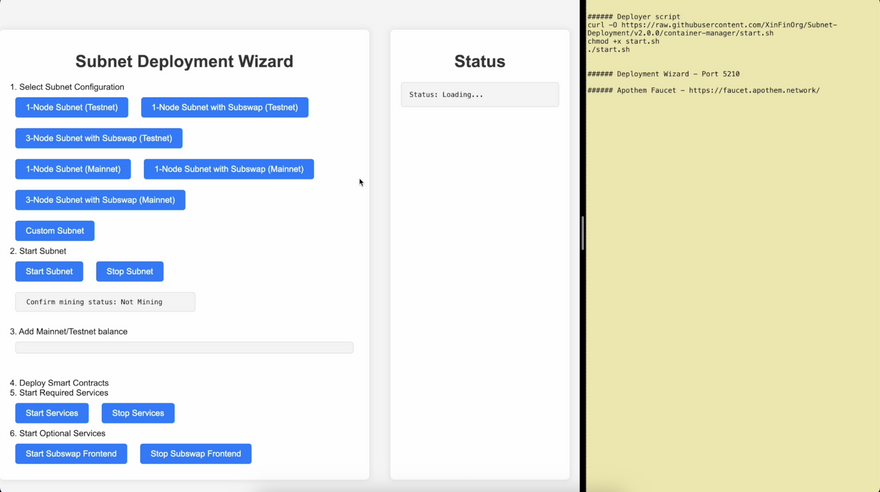So here’s the thing about XDC Subnets. They’re basically the missing link between private blockchains that companies love for control and the public XDC network that everyone uses for open trade. Think of it like having your own private world inside the internet that can still plug into the larger web whenever you want. An enterprise can build its own subnet where all its internal assets, transactions, and data stay private, but the magic is that those same assets can travel out to the public XDC chain when it’s time to trade or settle with other organizations.
Inside a subnet, a company can create its own tokenized system. Every resource, share, or piece of data can exist as a digital asset. These assets can move around privately for accounting, record keeping, or even internal trades. The company has complete control, kind of like running its own economy. But when it wants to interact with another business, it can move those tokens to the public network. That’s when the subnet connects to the broader world and the assets become tradeable. It’s smooth, it’s efficient, and it keeps everything secure until you’re ready to go public.
This setup completely changes how tokenization works. Instead of waiting for some big public exchange to list assets, enterprises can start small on their private subnets. They can create tokens for internal use, private sales, or equity distribution. When they’re ready, those tokens can step into the public arena, bringing liquidity with them. It’s like a new kind of incubation model for digital finance where innovation happens privately first and then expands outward.
The potential use cases are endless. A real estate company could tokenize its property data and manage settlements privately before offering shares to investors on the public chain. A supply chain network could track goods internally while using the public side to verify authenticity. Financial institutions could test new instruments safely before connecting them to global markets.
What makes it all exciting is the freedom this brings. Every organization can now build its own financial sandbox, run experiments, and still plug into a global settlement layer when it’s time to do business. XDC Subnets make blockchain feel less like a locked system and more like an open playground for value, trust, and trade.
Setting up an XDC Subnet is like spinning up your own mini-blockchain inside the XDC ecosystem. It’s private, fast, and fully under your control, but it still connects to the public XDC network so the outside world can verify everything you do. Think of it as your own private island that occasionally sends postcards to the mainland to prove it’s real.
Your subnet is where all your transactions live. It’s got its own validators that produce blocks and keep your internal system humming. Then there’s the Relayer, which acts like a messenger or a delivery guy. Every so often, it grabs a snapshot of your subnet’s activity called a checkpoint and delivers it to a Checkpoint Smart Contract (CSC) sitting on the main XDC chain. The CSC is like your public receipt. It’s proof that your subnet’s data is authentic and accounted for on the global network.
Now, setting it up isn’t hard. All you really need is an Ubuntu server with Docker installed. After that, you just fire up the Subnet Deployment Wizard. It walks you through everything creating your network, generating node keys, linking to the parent chain, and deploying your CSC. The wizard even gives you your CSC address right away that’s what connects your subnet to either the XDC mainnet or the Apothem testnet. You can also decide how often your subnet sends checkpoints. If you want maximum precision, send them every block. If you’d rather save gas, set it to a checkpoint periodically.
Once everything’s running, you configure the Relayer with your subnet’s RPC endpoint, the parent chain’s endpoint, and your CSC address. Then it just does its job quietly in the background, keeping your subnet synced with the public chain. You can open up the Subnet Dashboard anytime to watch the magic happen blocks being produced, validators doing their thing, checkpoints showing up live on XDC. In a few minutes, you’ve got your own fully functional, verifiable blockchain.
And here’s where it gets even cooler once your subnet is online, you can integrate Subswap. It’s a decentralized exchange built specifically for subnets, so your users or organizations can trade tokens directly within your private network or bridge them out to the public XDC chain when you’re ready. Think of Subswap as the liquidity layer for your subnet. It turns your private ecosystem into an actual marketplace. You can launch internal assets, manage private liquidity pools, and even open up selective public trading.
At the end of the day, XDC Subnets give you the best of both worlds — the privacy and control of your own blockchain with the security and visibility of the XDC main network. You can build, trade, and experiment freely inside your subnet, then connect to the public chain whenever it’s time to scale. With the Subnet Deployment Wizard and Subswap ready to go, setting one up feels less like a tech project and more like unlocking your own digital economy. It’s simple, powerful, and kind of addictive once you see it working. Honestly, you should try it out.
All you need to get started is to run this script on the machine you want to run your subnet and open the deployment wizard on port 5210!
curl -0 https://raw.githubusercontent.com/XinFin0rg/Subnet-
Deployment/v2.0.0/container-manager/start.sh
chmod +x start.sh
/start.








Discussion (0)